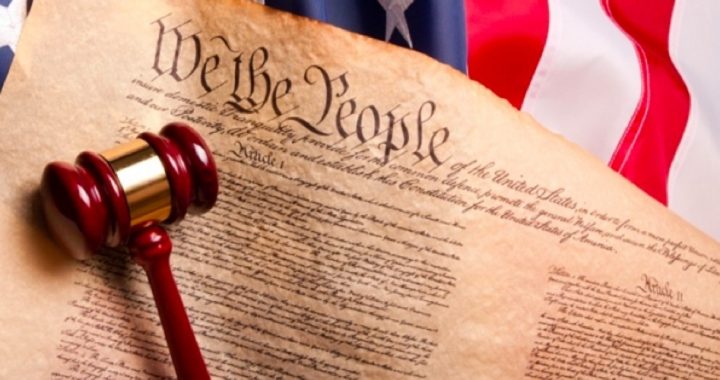
Maryland’s Court of Special Appeals ruled Wednesday that police in Baltimore and around the state have illegally used cell site simulators for tracking suspects and capturing mobile-phone traffic without first obtaining a warrant.
The ruling by the three-judge panel reads in part, “Cellphone users have an objectively reasonable expectation that their cellphones will not be used as real-time tracking devices, through the direct and active interference of law enforcement.”
The New American previously reported on the widespread use of cell site simulators — commonly called “Stingrays” because of the popularity of that particular model. As this writer said then:
Local police all over the country are using highly sophisticated, very expensive surveillance tools to capture information from cell tower traffic from the innocent and the guilty alike. The devices they use were originally touted as “tools for combating terrorism.” Now they are being used as the shortest path in solving even the most petty crimes.
These devices act as a “man-in-the-middle” by mimicking a cell tower and fooling any mobile phone in the area into connecting to them instead of the tower itself. The device then harvests data from the phone including the number of the phone, the number the phone is calling or texting, the location of the phone, any data related to Internet use and information about the phone itself. It then relays the connection to the nearest real tower in the area and intercepts all traffic coming from the tower to the phone before it relays that traffic back to the phone.
Since cell site simulators do not target specific phones — but instead vacuum up all data from all phones within the coverage of the device — and since the devices are almost always used without the police first obtaining a warrant, their use is a clear violation of privacy and the Fourth Amendment guarantee against illegal searches and seizures. To make matters worse, police have regularly used the devices for everything from serious crimes — such as murders and rapes — to petty crimes — such as burglary and prank phone calls. And the use of these devices is prolific. As we said in that previous report:
Police are using these devices as the shortest path because it is easier than conducting an old-fashioned investigation. The result is that police are becoming accustomed to the ease and convenience of these tools and are using them more and more. The city of Baltimore alone has used its Stingray 4,300 times since 2007. That is at least 11 times per week. The majority of those cases were for petty crimes.
Use of the devices has come under fire at all levels; local, state, and federal. In fact, last year the U.S. Depart of Justice (DOJ) announced a new policy regarding the way law enforcement can use cell-site simulators. The new policy requires all federal law enforcement agencies to obtain a warrant before using the devices. The DOJ policy is not binding on local and state law enforcement agencies.
The case at hand in the recent court decision deals with an attempted murder suspect, Kerron Andrews. As the court’s ruling states:
On the evening of May 5, 2014, the Baltimore City Police Department (BPD) used an active cell site simulator, without a warrant, to locate Appellee Kerron Andrews who was wanted on charges of attempted murder.
The cell site simulator, known under the brand name “Hailstorm,” forced Andrews’s cell phone into transmitting signals that allowed the police to track it to a precise location inside a residence located at 5032 Clifton Avenue in Baltimore City. The officers found Andrews sitting on the couch in the living room and arrested him pursuant to a valid arrest warrant. The cell phone was in his pants pocket. After obtaining a warrant to search the residence, the police found a gun in the cushions of the couch.
Because the use of the Hailstorm cell site simulator without a warrant was ruled an unreasonable search, “The court suppressed all evidence obtained by the police from the residence as fruit of the poisonous tree,” according to Wednesday’s ruling. The state appealed the suppression of evidence and the appellate court ruled that the suppression should stand.
This case could have far-reaching implications regarding other cases where these devices have been used without a warrant. In fact, USA Today has reported:
[The recent] decision could imperil hundreds of criminal convictions in Baltimore and elsewhere in Maryland, where police have used stingrays prolifically. An investigation last year by USA TODAY identified nearly 2,000 cases in Baltimore alone in which the police had secretly used stingrays to make arrests for everything from murder to petty thefts, typically without obtaining a search warrant.
“We have a grave concern that our clients are incarcerated because of the use of a stingray that was illegal,” said Natalie Finegar, who is coordinating a review of stingray cases for the city’s public defender.
Defense lawyers have been poring over cases of convictions where the devices were used and “are focused most urgently on about 200 cases in which people appear to have been sent to prison based on evidence the police found after they used” cell site simulators, according to USA Today.
While this case underscores the value of privacy, it also illustrates what happens when police depend on novel shortcuts that violate that privacy. Because these convictions were based on “fruit of the poisonous tree,” they may be overturned. As a result of that, criminals who may have gone to jail and stayed there may now go free.
This is a classic case of surveillance hawks promising security in exchange for liberty. As per usual, they have taken the one and failed to deliver the other.




